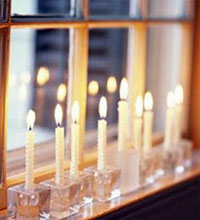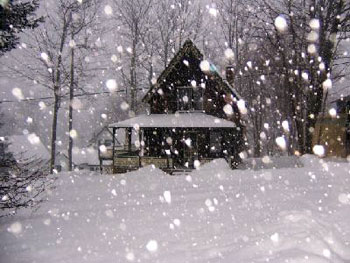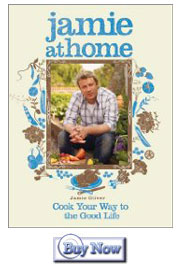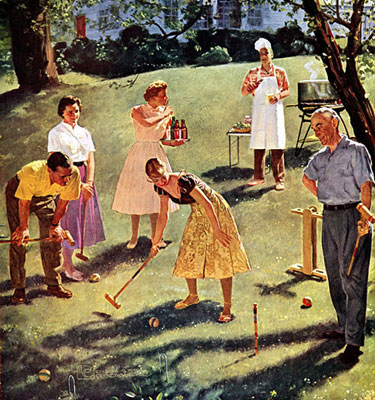From the Huffington Post
 When you think of Christmas dinner, what's on the table? Maybe a standing rib roast? A turkey with all the trimmings? Maybe a ham? For us, and for lots of excitable eaters across the Southwest, we also think of tamales. This traditional Mexican comfort food, eaten for breakfast or dinner (or anything in between really), is a cornmeal dumpling, stuffed with other goodies and steamed in a corn husk.
When you think of Christmas dinner, what's on the table? Maybe a standing rib roast? A turkey with all the trimmings? Maybe a ham? For us, and for lots of excitable eaters across the Southwest, we also think of tamales. This traditional Mexican comfort food, eaten for breakfast or dinner (or anything in between really), is a cornmeal dumpling, stuffed with other goodies and steamed in a corn husk.
The most traditional tamales are stuffed with pork simmered for hours in a red chile sauce, green chiles and cheese or chicken with salsa verde. But we've also enjoyed sweet dessert tamales filled with raisins and pineapple on occasion. We want to warn you: you'd be hard-pressed to find a tamales recipe that isn't a bit of a project. Simmering pork requires time.
Blending the masa harina with the -- ahem -- lard (or whichever fat you decide to use) takes patience. Filling the corn husks with the right amount of filling takes practice and a willingness to mess up a few times.
But the result is completely worth it. Tamales are some of the heartiest, most comforting winter fare we can think of. Whether they're brand new to your family and friends, or a long-lost tradition, we really think 2012 is the tamale's year. Happy holidays and don't overfill your corn husks!

 I was never walked into a temple. Never. Not by my dad, the Jew. I thought being Jewish meant eating lox, bagel & cream cheese in a deli. Because that’s what my dad, the non-religious Jew told me. When we ate at Nate n’ Al’s, he would announce loudly as he seemed to be pointing to the food, “We’re Jews!!!”
I was never walked into a temple. Never. Not by my dad, the Jew. I thought being Jewish meant eating lox, bagel & cream cheese in a deli. Because that’s what my dad, the non-religious Jew told me. When we ate at Nate n’ Al’s, he would announce loudly as he seemed to be pointing to the food, “We’re Jews!!!” It’s not easy being Jewish during the Christmas season, especially if
you’re a kid. Chanukah is great, don’t get me wrong. Presents for eight
nights in a row. Lighting the candles and watching them flicker in the
menorah until they gradually fade away. And I’m a big fan of the latke.
But compared to Christmas? Really?
It’s not easy being Jewish during the Christmas season, especially if
you’re a kid. Chanukah is great, don’t get me wrong. Presents for eight
nights in a row. Lighting the candles and watching them flicker in the
menorah until they gradually fade away. And I’m a big fan of the latke.
But compared to Christmas? Really? Here in Maine we await a "super storm" that is huge and rushing across the United States, or so they say. Six to twelve inches of snow, turning to freezing rain with high winds. Sounds like Winter weather in Maine, not too unusual. It isn't the size of the storm it's what you find to make it fun that counts and I have a plan to enjoy it! In between plowing I will be making our Mother's tortiere pies and perhaps having a slice for lunch and another with a pot of hot tea in the afternoon to warm up.
Here in Maine we await a "super storm" that is huge and rushing across the United States, or so they say. Six to twelve inches of snow, turning to freezing rain with high winds. Sounds like Winter weather in Maine, not too unusual. It isn't the size of the storm it's what you find to make it fun that counts and I have a plan to enjoy it! In between plowing I will be making our Mother's tortiere pies and perhaps having a slice for lunch and another with a pot of hot tea in the afternoon to warm up.

